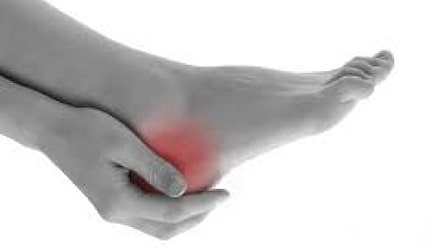
Heel pain is a common injury in the sporting and active population. There are several different causes of heel pain. Below are some conditions we commonly treat here at Activate Physiotherapy.
Sever’s Disease
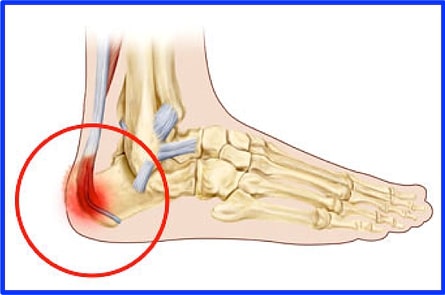
Sever’s disease involves inflammation at the growth plate of the lower part of the heel bone (calcaneal), where the Achilles tendon inserts causing pain and discomfort in this area. This condition is the most common cause of heel pain in children (pre-puberty), especially those who play sports regularly and often last for 6-12 months. It is more common in boys than girls. This condition is generally related to rapid growth – whereby, the leg bone (tibia) becomes longer and the muscles and tendons become tight as a result causing a traction injury to the bone. Pain is usually activity-related and a thorough assessment by your physiotherapist can determine whether this is the source of pain. Management should be conservative and surgery is not usually indicated. Treatment includes activity modification, addressing muscle flexibility and foot bio-mechanics. Sports taping techniques and a heel raise can make this heel pain more manageable for very active children.
Achilles Tendinopathy
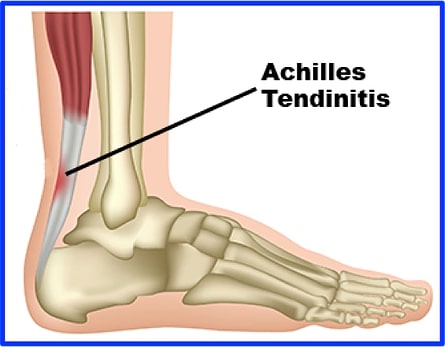
This is a progressive overload/overuse injury of the Achilles tendon. The Achilles tendon is the biggest and strongest tendon in the body and it can withstand large amounts of weight and load. Some factors can pre-dispose you to excessive overloading of this tendon which can result in tendinopathy. These include factors such as; increase in activity, change in training surface (i.e. road vs grass), change in footwear and/or poor footwear, excessive pronation (poor arch control), calf weakness and poor flexibility.
This condition usually presents as a gradual onset and sometimes insidious (no cause or mechanism) of pain. Patients can present with some swelling around posterior (back) heel and tenderness through the tendon. Imaging, such as US and MRI, can show changes in the tendons structure; however this is not necessary for a diagnosis.
The key to a successful management is early diagnosis and treatment to prevent any further damage to tendons. Treatment will consist of shockwave therapy to promote healing and reduce pain, an eccentric strengthening program, corrections of risk factors (including addressing ankle bio-mechanics and muscle tightness) and a monitored return to sport program. Long term/ chronic Achilles tendinopathy may require a longer period of rehabilitation.
For more on Achilles Tendonitis click to read the specific article.
Plantar Fasciitis

This is another overuse injury but presents on the base of the foot at the heel (as pictured). Common causes are repetitive activities that cause a stretching of the arch, or prolonged standing on hard surfaces. Pain will be felt in the heel and is usually worse in the morning. A physiotherapist can diagnose this condition with special tests and an assessment of your gait or walking pattern. Management for this condition is similar to other tendonitis’s and includes physiotherapy and exercises to address biomechanical issues and imbalances, shockwave therapy to promote healing and pain relief and activity modification. In the majority of cases plantar fasciitis can be resolved conservatively, however in rare cases surgery may be required.
For more on Plantar Fasciitis click to read the specific article.
Achilles Rupture
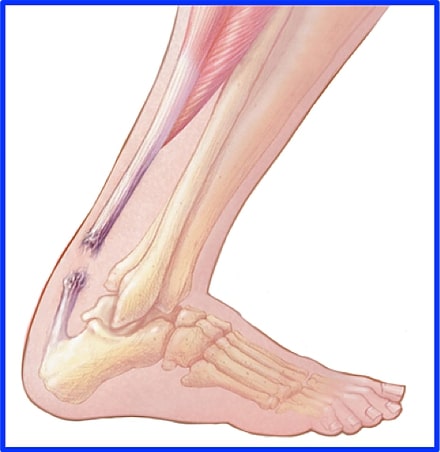
This condition will often present as a sudden onset of pain, usually during activity that requires maximum ankle flexion, such as jumping or sprinting. Patient suffering an Achilles rupture will be unable to weight bear and will feel very weak in the ankle. People often describe the pain as “being kicked in the back of the leg”. Sometimes pain following the incident can be minimal and you may only have a functional deficit, such as a limp. This injury may require surgery and/or immobilisation in cast or moon boot for a number of weeks, followed by an intense and thorough rehabilitation program.
Posterior Impingement Syndrome
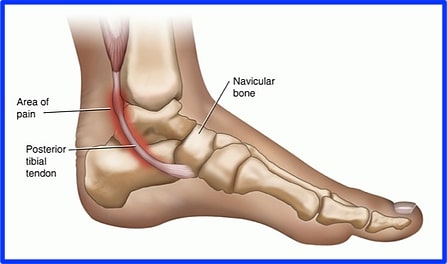
Not as common as other heel injuries, this condition is caused by an impingement of the posterior ankle bone (Talus) on the posterior tibia (leg bone) in extreme plantarflexion (ankle flexion). More commonly seen in sport populations that involves excessive plantarflexion such as, ballet dancers or gymnasts.
